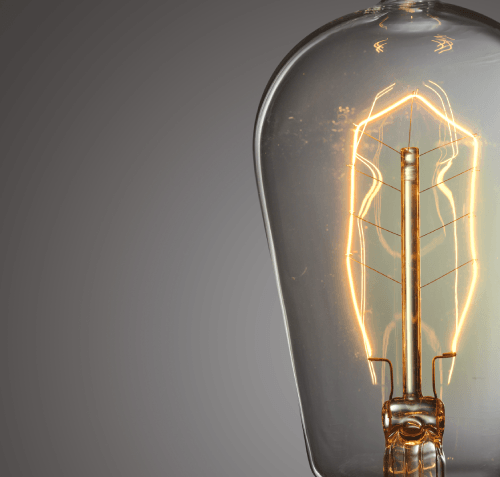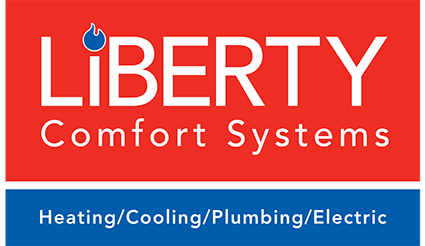
Electricity is vital in your home or business to power all sorts of equipment or machines. You need electricity to turn on your laptop, television and sound system. The source of energy is crucial for cooking, illuminating your house, and keeping it warm. In short, electricity is useful for running devices and giving you comfort. Do you sometimes wonder where it comes from? Electricity production involves a series of steps. At Liberty Comfort Systems, we take you through the processes that contribute to electricity generation.
What Is Electricity?
Electricity is energy produced from the movement of electrons. The positive and negative charges come together within conductive materials to create energy. Typically, the process generates static electricity, which emanates from friction. The movement comes with dynamic electricity, also called a current. An electric generator is crucial in changing mechanical energy into electrical energy. Turbines and cells are examples of generators that aid in electricity production.
Most importantly, electricity generation involves power plants that draw electrical energy from certain energy sources. Primary energies, such as wind, tidal power, and solar power, are renewable. Examples of non-renewable sources are natural gas, oil, and coal. Companies sell the energy to other organizations to supply it to homes and businesses at a fee upon production.
Types of Electricity Plants
As aforementioned, electricity production relies on primary materials that release energy. In that regard, there are arrays of power plants that produce electricity. Here are the various types of electricity plants in detail.
1. Conventional cycle thermal-electric plant
The primary sources of fuel here are natural gas, coal, and oil. Companies burn the energies to heat a water tank that produces steam. The steam is responsible for driving a turbine. The movement produces electricity using an alternator. Thus, mechanical energy transforms into electrical energy. Steam goes through a condenser, changes back into a liquid, and the whole process restarts.
2. Nuclear power plant
Nuclear fission releases heat in a reactor, which in turn boils large quantities of water at high pressure. The nuclear fuel rods produce steam in the process, becoming electricity. The next step is to channel the power through a turbine linked to a generator. Usually, nuclear plants use uranium as fuel to run the process.
3. Solar power farm
Solar power plants fall into two categories: photovoltaic installation and thermal-solar installation. A photovoltaic installation typically uses photovoltaic cells to transform solar energy into electricity. Thermal-solar installation utilizes heat from the sun to heat large water quantities. The process produces steam that drives the turbine generating electricity.
4. Hydro-electric plant
A hydro-electric farm uses water to run a hydraulic turbine. Companies build the plants in reservoirs and barrages to get a constant water supply.
5. Combined-cycle thermal-electric plant
The plant uses coal, natural gas, and diesel oil in its operation. The fuel burns and heats water in a tank, generating steam. The steam drives one turbine while gas runs another turbine to make it more efficient. The air emanates from the outside environment.
6. Geothermal power farm
Electricity production in a geothermal power plant entails heating water to produce steam. The farm uses natural heat in the subsoil within pipelines to generate steam that drives turbines.
7. Biomass plant
A biomass farm uses waste to generate electricity. It can be industrial, agricultural, human, and urban waste. Basically, the power plant burns the organic material to produce heat.
8. Tidal power farm
Tidal power plants use water movements in high and low tides to drive a turbine. The farm uses a generator to produce electricity.
9. Wind plant
A wind farm utilizes wind to drive its turbines. The movement generates electricity used in homes and businesses.
10. Wave power plant
The plant uses the force of waves as water movement to run a turbine. In the process, electricity is generated due to the wave technology.
Hydro-Electric Energy Production
It’s no secret that water and movement breed hydro-electric energy. Power plants harness the force of water by blocking a river using a concrete wall. Then, water flows through penstocks, which are large pipes with the help of gravity. The torrents make turbine blades flow quickly, generating kinetic energy. Electric generators in the power plant receive mechanical energy from turbines. After that, a transformer increases electric energy and transmits it to your power grid. Your appliances will then get a constant power supply to ignite and function.
Wind Power Energy Generation
The force of wind causes blades in wind turbines to spin, leading to mechanical energy. Transfer of the mechanical energy to copper wires occurs, transforming the power to electrical energy. In short, wind changes into electricity with the aid of turbines or aerogenerators. The unit contains a grid connection system and control system as well.
Wind moves air from high atmospheric regions to low atmospheric pressures. Power plants tap the pressure difference. When the difference is great, it means that the wind blow is powerful. Thus, power generation will be exceptional due to the pressure variations in the two zones.
Photovoltaic Solar Energy Production
Sunlight transformation into energy requires metal semi-conductor sheets or photovoltaic cells. The cells have a layer or more of transparent glass that allows solar radiation and controls heat loss. Typically, the solar panel on your roof has photovoltaic cells.
Sun rays strike the cells on the panel to generate an electrical field that leads to a circuit. Intense heat from the sun results in a higher electricity flow. Photovoltaic cells then convert sunlight or rays into direct current (DC) electricity. Experts use an inverter to turn the energy into alternating current (AC). This is the solar power that you utilize at home. Solar power is affordable and eco-friendly since you get it from a natural source that doesn’t deplete.
Geothermal Energy
Geothermal energy uses heat in hot springs or hot rocks to produce electricity. Companies dig deep into the earth and insert thermal heat pumps to generate energy. At about 10 meters below the earth’s surface, you can obtain a level of 17 degrees Celsius. Thus, you can go further to get the energy that you need. You can use the power to heat water, cool or warm the atmosphere. It all depends on the temperature that the heat pump harnesses from the earth.
Power plants can use another technique of injecting water into the earth to increase the temperature levels. Water turns into steam. The steam then channels to the power plant, becoming potential energy, and the potential energy is transformed into electricity.
Tidal Power
As mentioned earlier, tidal power comes from water tides in high and low movements. The gravitational force of the moon and sun rays on the sea cause tides. Power farms build tidal barrages to make use of the difference in height between low and high tides. The amount of energy that the barrages produce is massive. Another way of harnessing tidal power is through steam generators. Axial turbines move, generating mechanical energy that steam generators convert into electricity.
Final Thoughts
You can count on us at Liberty Comfort Systems for comprehensive electrical services. We offer repairs, maintenance, and installation services. You can expect stellar performance from our award-winning electrical services. Residents in Anoka, MN, can contact us at any time for help with heating and cooling services as well. Please call our office for more information.

